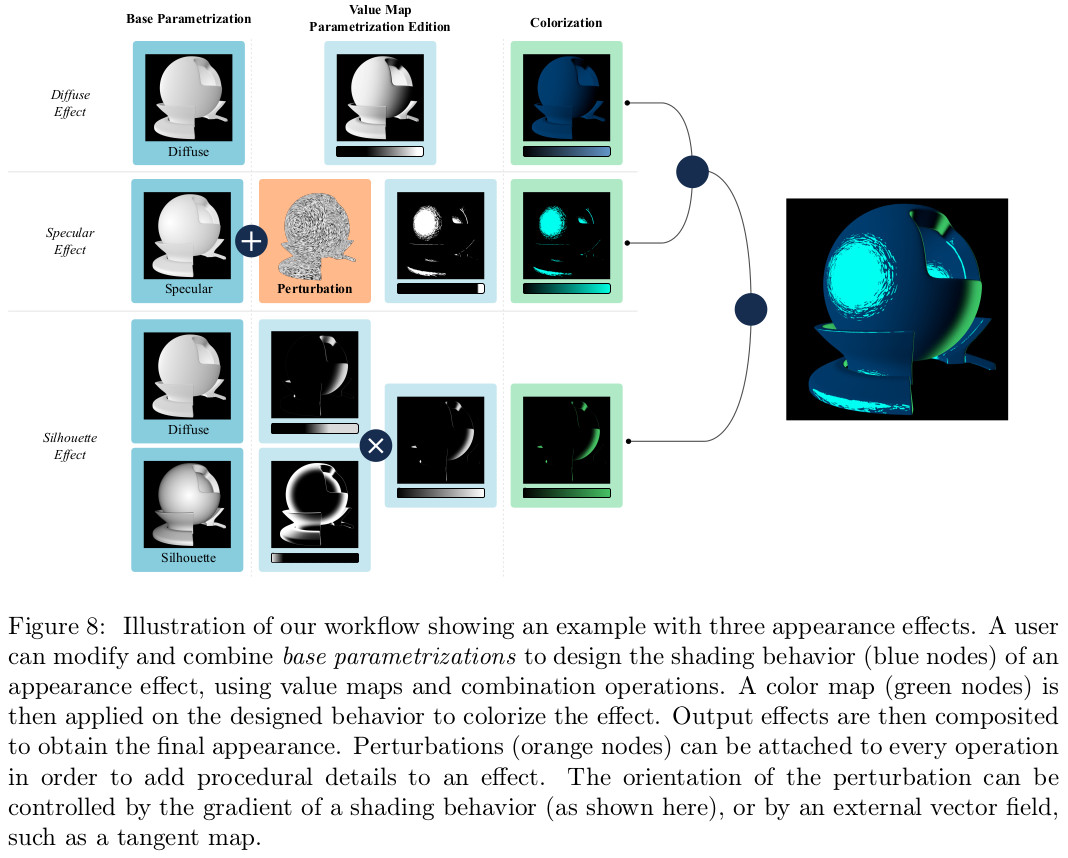A workflow for designing stylized shading effects

Abstract
In this report, we describe a workflow for designing stylized shading effects on a 3D object, targeted at technical artists. Shading design, the process of making the illumination of an object in a 3D scene match an artist vision, is usually a time-consuming task because of the complex interactions between materials, geometry, and lighting environment. Physically based methods tend to provide an intuitive and coherent workflow for artists, but they are of limited use in the context of non-photorealistic shading styles. On the other hand, existing stylized shading techniques are either too specialized or require considerable hand-tuning of unintuitive parameters to give a satisfactory result. Our contribution is to separate the design process of individual shading effects in three independent stages: control of its global behavior on the object, addition of procedural details, and colorization. Inspired by the formulation of existing shading models, we expose different shading behaviors to the artist through parametrizations, which have a meaningful visual interpretation. Multiple shading effects can then be composited to obtain complex dynamic appearances. The proposed workflow is fully interactive, with real-time feedback, and allows the intuitive exploration of stylized shading effects, while keeping coherence under varying viewpoints and light configurations. Furthermore, our method makes use of the deferred shading technique, making it easily integrable in existing rendering pipelines.